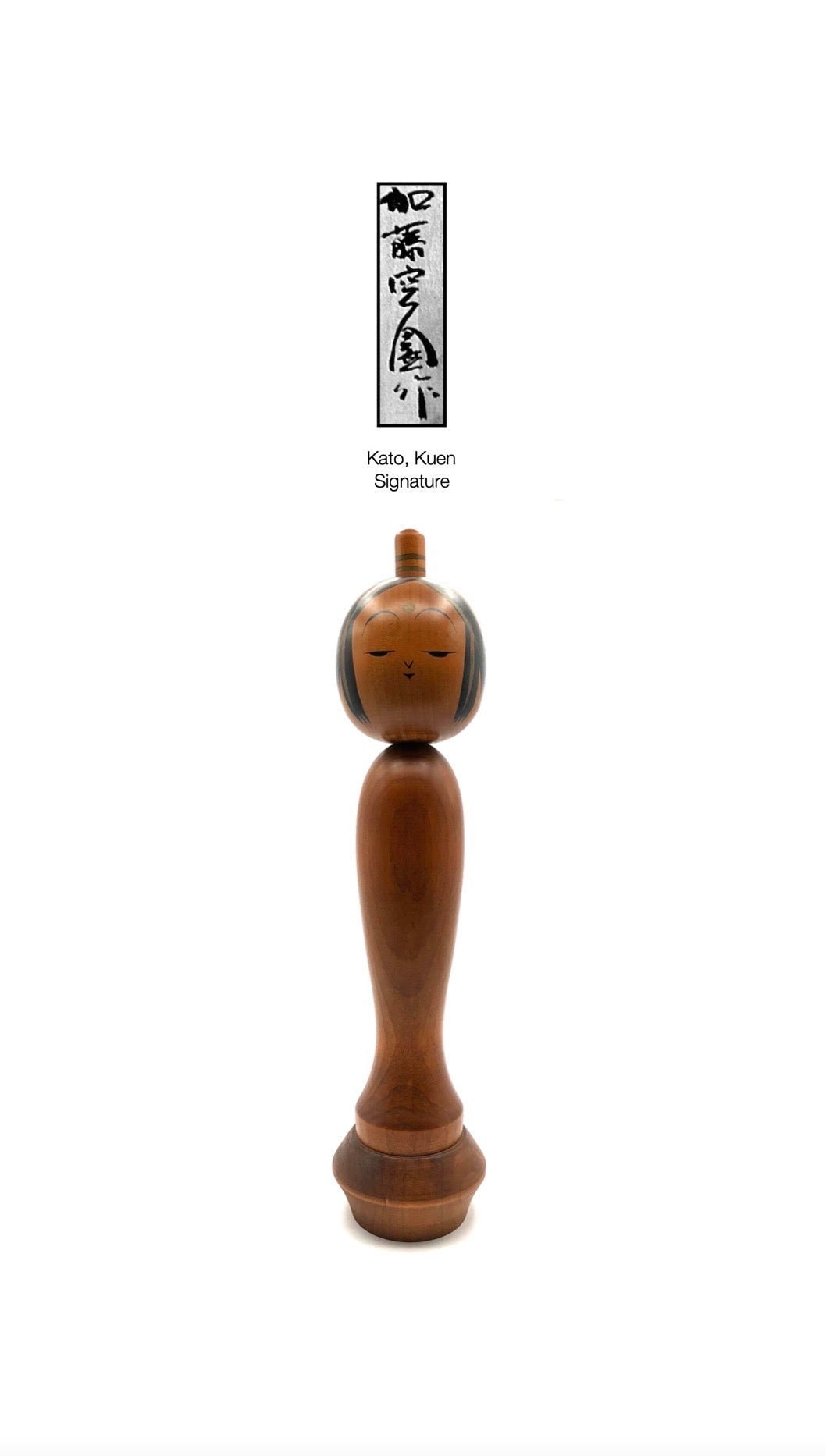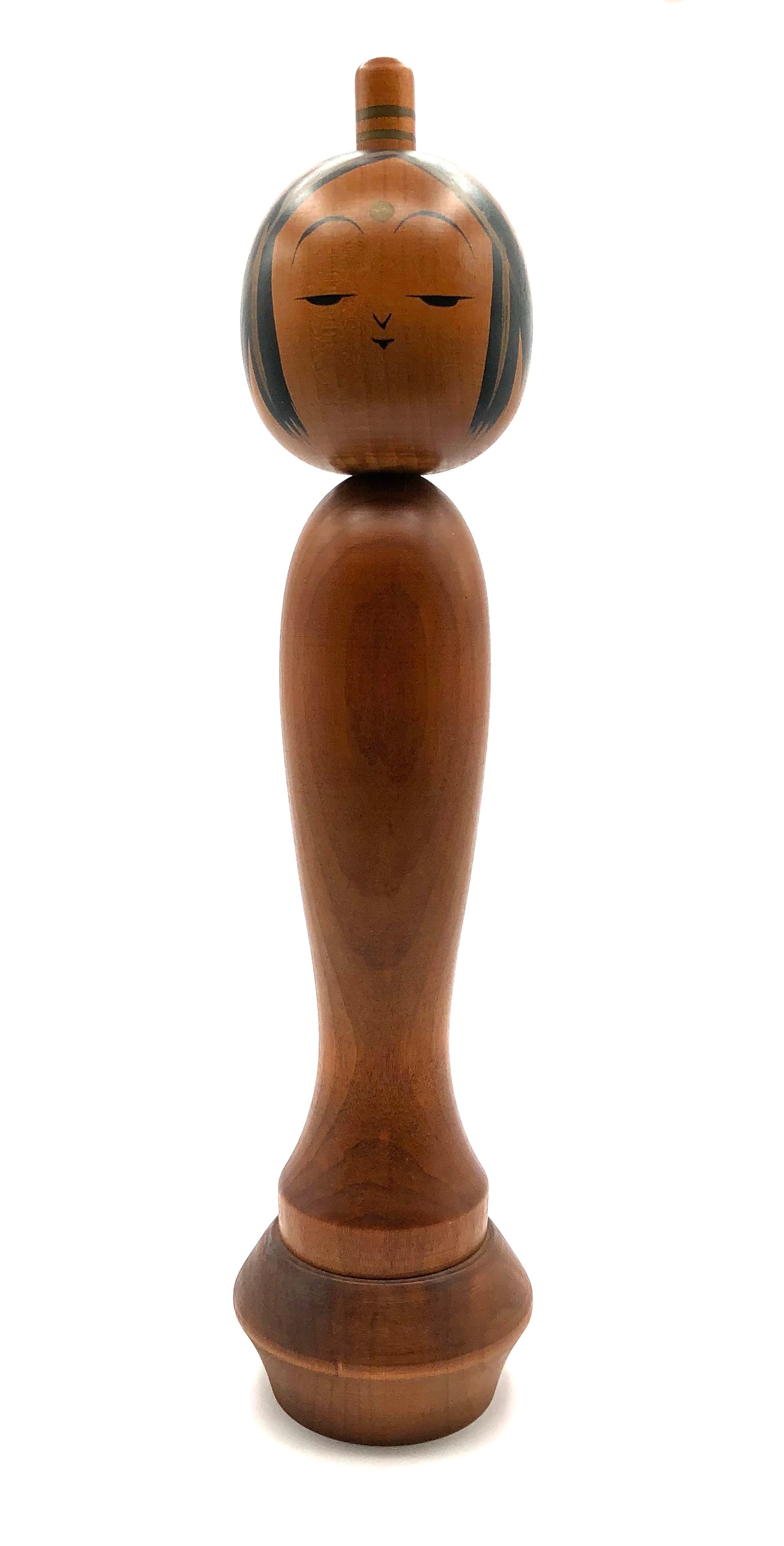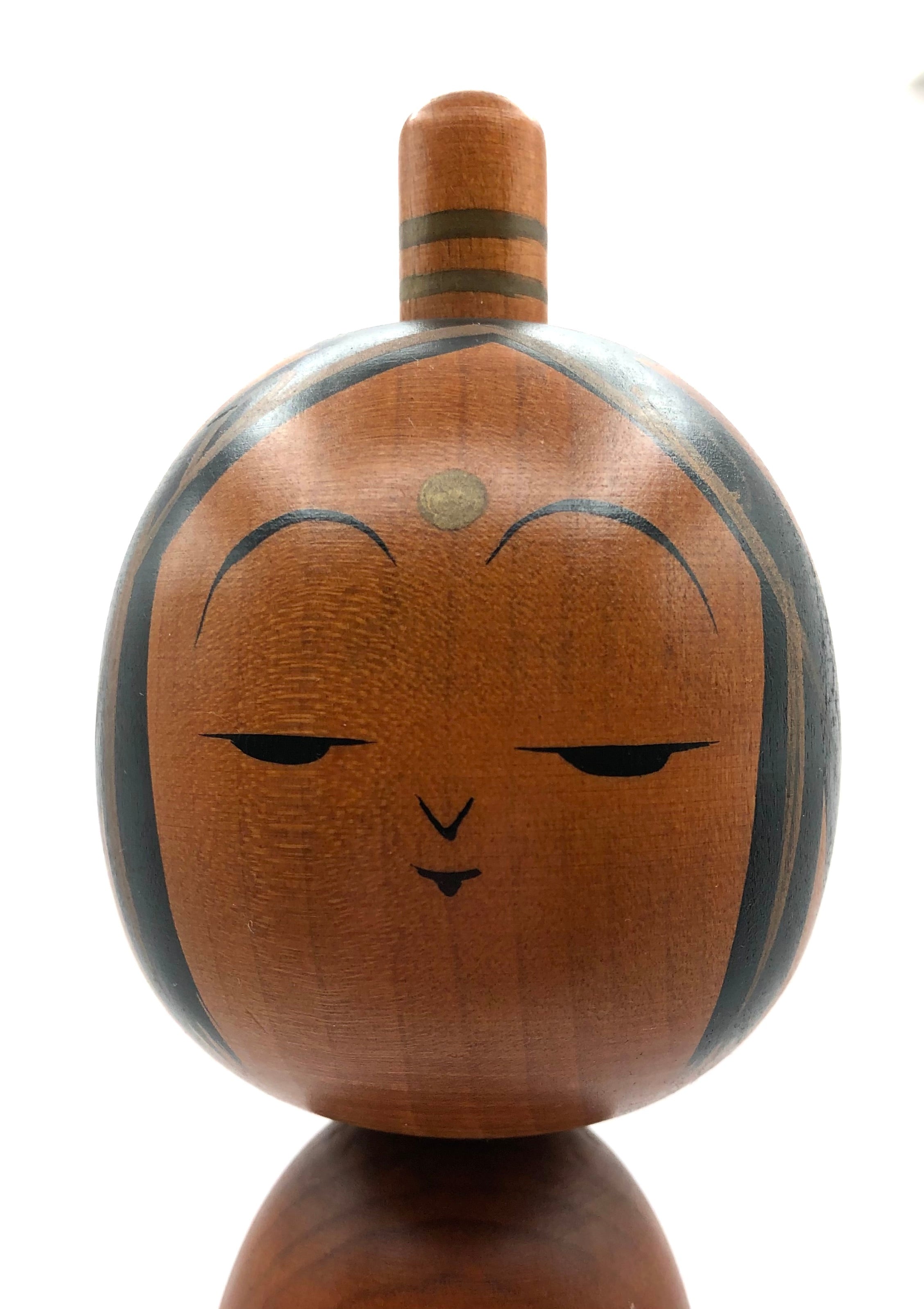
Artisan | Woodworker: Kato, Kuen (1876-1971)
Biographical History:
Kato-san was a priest of the Kannon-ji Temple on Mt. Koya, Japan, and was said to be a member of the Imperial family. Japanese temples are primarily places of worship and used to house and display sacred objects. Few religious figures appear in a Kokeshi-type doll than Daruma, and none have been included in the “Traditional" styles. However, ‘creative’ versions do appear from time to time, all of which are beautiful in their simplicity and elegance. He began turning similar dolls as a “Samana”, then later a monk “Bhikkhu”, and was a member of the Imperial family. He was assigned to the Kannon-ji Temple on Mt. Koya, a holy place of huge monastery settlements, and a starting place for all Buddhist pilgrimages. His dolls were only made in the 20th century.
As collectors, we felt it was most important to represent all Sosaku Kokeshi artists, whether or not each artist has a written account of his/her life. We show the diversity of cultural values and the creative work produced by a multitude of artists. As a valued customer, Kokeshi collector noted, “Kokeshi collecting is a personal journey in this everlasting realm of Japanese esthetics”. DF
In researching old writings through articles and books that remain, it is evident that the Kokeshi Craftsperson not only created beautiful forms as toys, but also kept alive cultural values, customs, and fashion through the extensive representations of Kokeshi dolls. The beauty is in the doll and not the signatures, for most masters never signed their dolls. Later they named the dolls, but only when Westerners insisted on signatures because they did not know the artists, so the carvers began to sign their works, for the carvers wanted to promote sales to make a living, during the seasons that did not provide an environment to continue their otherwise daily work.
Collector's Note — descriptive qualities, standard characteristics, & ornamentation styles:
Kokeshi, lathe-turned subjects created by this artist are very limited and particularly made for fundraising and wish granting. Kato-san’s major Kokeshi-type creation is always in the form of Bosatsu Kannon, (Kannon-ji Temple), and is minimally adorned in black and gold and exhibits a serene appearance. She always exhibits a muted gold Bandi, (religious mark) on her forehead and is believed to be an energy center of the human body, representing the “third eye”. Each is in a beautifully formed carving, slender, and exhibits a "pic" nose an a small mouth with black eyes and eyelashes looking downwards in meditation. The almost veil-like long black hair that drapes the sides of her face, is simply rendered with a ‘Mage’ on the top. His figures are always carved from Cherry Wood, (Sakura). All dolls contain a parchment scroll with personal prayer/wish inside the removable base. His Kokeshi-based doll epitomizes the Buddhist philosophy that to reach enlightenment one must lead a simple and frugal life.


